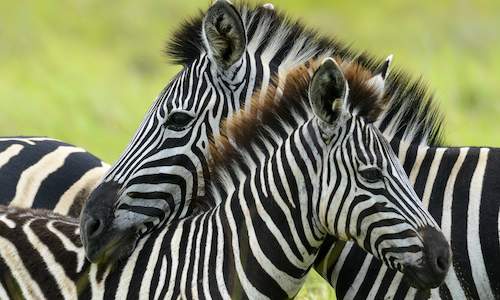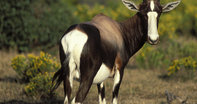
Bontebok
Name:
Bontebok (Damaliscus pygargus pygargus)
Appearance
The bontebok is a largely dark brown antelope, marked with a prominent, wide, white blaze on its face. Its belly, hocks and rump are white, and the tip of its tail black. Both rams and ewes have horns - the rams’ larger and longer than the ewes’.
Bontebok Diet
The bontebok prefers the plains of short grass with the vegetation of the fynbos plant kingdom.
Bontebok Breeding
The bontebok is a seasonal breeder, the rut occurring between January and mid-March. After a gestation period of 238 to 254 days, single calves are born in South Africa during September and October. Ewes become sexually mature at two years of age.
Bontebok Behaviour
Being social and territorial animals, the bontebok live together in herds. During breeding season, the rams will defend a small nursery of 2 to 8 ewes and their young. Young males group in bachelor herds.
Where they are found
By 1830, bontebok were hunted by colonists to the extent that merely 22 remained. Consequently, the Bontebok National Park was established in 1931 to ensure their protection resulting in an increase of population to 2000 in 1992. A second reserve was established near Swellendam in 1961, and is home to 200 to 300 bontebok. In past times, the bontebok was distributed only in the southwestern Cape, but has been relocated to conservation areas in South Africa.
Field Notes
The bontebok’s name derives from the Dutch settlers naming it according to its two colours, literally translating to ‘pied buck’. It is a subspecies of the blesbok, and the two have interbred to the degree that some conservationists believe there to be no purebreds of either species left.

Learning about the mammals of South Africa is now so much easier for all South Africans - SouthAfrica.co.za is an excellent source of inform...
more
